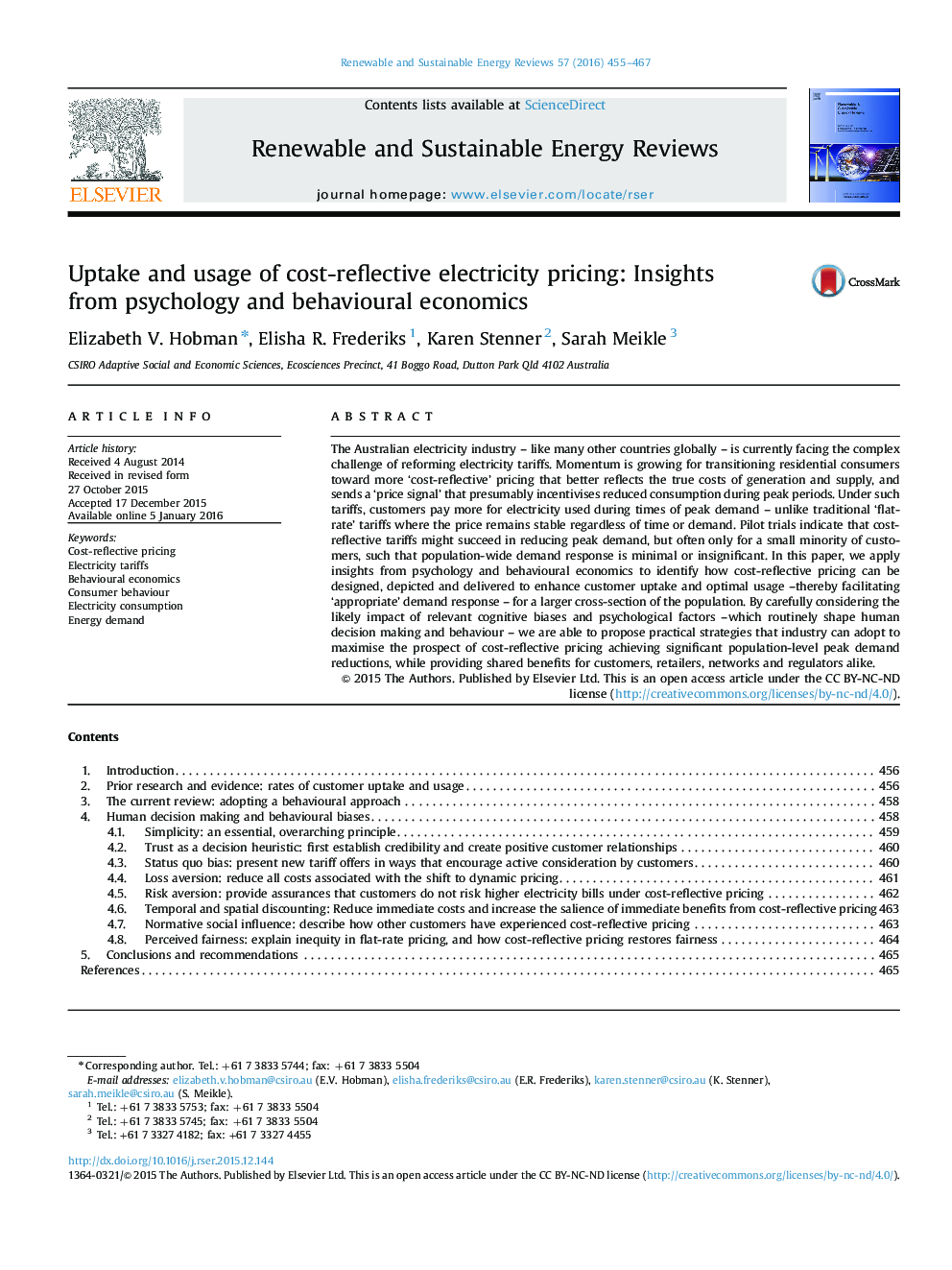| Article ID | Journal | Published Year | Pages | File Type |
|---|---|---|---|---|
| 8114557 | Renewable and Sustainable Energy Reviews | 2016 | 13 Pages |
Abstract
The Australian electricity industry - like many other countries globally - is currently facing the complex challenge of reforming electricity tariffs. Momentum is growing for transitioning residential consumers toward more 'cost-reflective' pricing that better reflects the true costs of generation and supply, and sends a 'price signal' that presumably incentivises reduced consumption during peak periods. Under such tariffs, customers pay more for electricity used during times of peak demand - unlike traditional 'flat-rate' tariffs where the price remains stable regardless of time or demand. Pilot trials indicate that cost-reflective tariffs might succeed in reducing peak demand, but often only for a small minority of customers, such that population-wide demand response is minimal or insignificant. In this paper, we apply insights from psychology and behavioural economics to identify how cost-reflective pricing can be designed, depicted and delivered to enhance customer uptake and optimal usage -thereby facilitating 'appropriate' demand response - for a larger cross-section of the population. By carefully considering the likely impact of relevant cognitive biases and psychological factors -which routinely shape human decision making and behaviour - we are able to propose practical strategies that industry can adopt to maximise the prospect of cost-reflective pricing achieving significant population-level peak demand reductions, while providing shared benefits for customers, retailers, networks and regulators alike.
Keywords
Related Topics
Physical Sciences and Engineering
Energy
Renewable Energy, Sustainability and the Environment
Authors
Elizabeth V. Hobman, Elisha R. Frederiks, Karen Stenner, Sarah Meikle,
